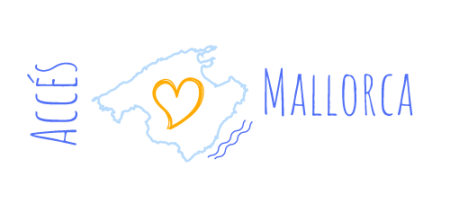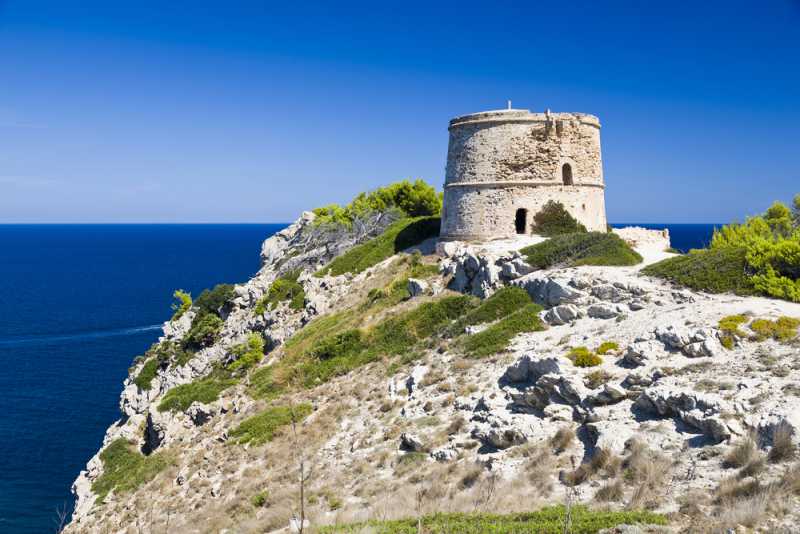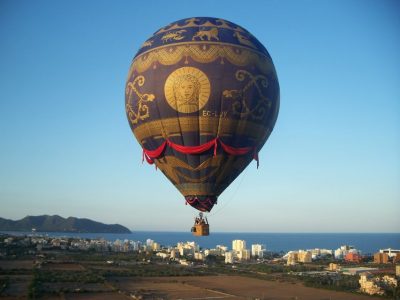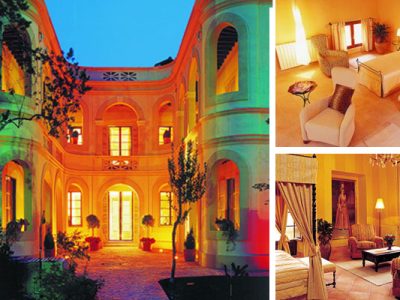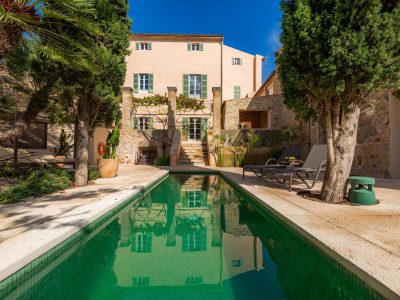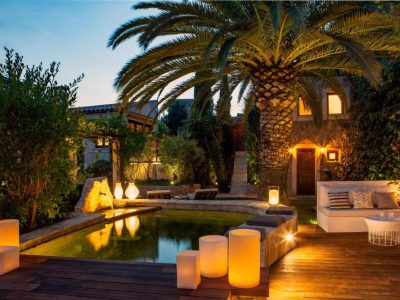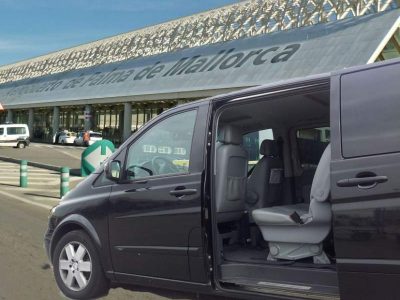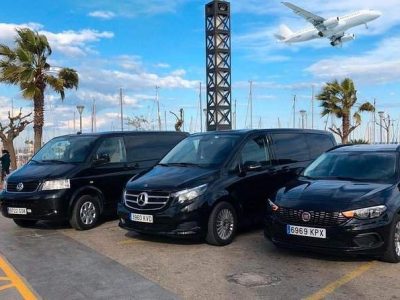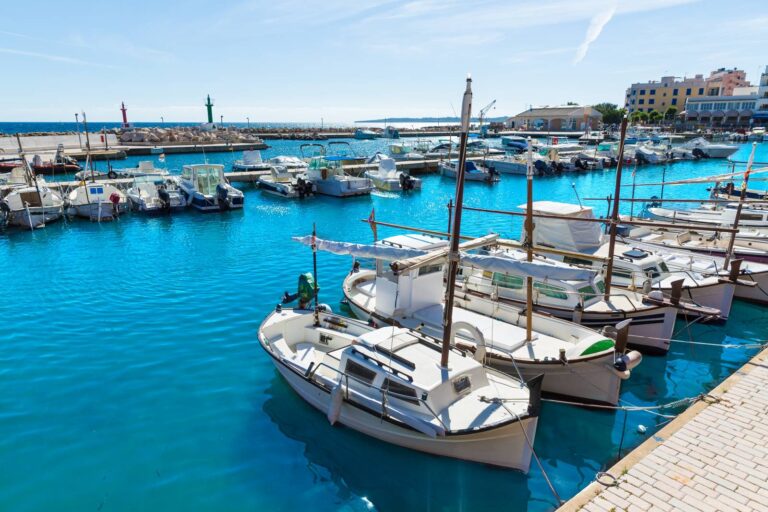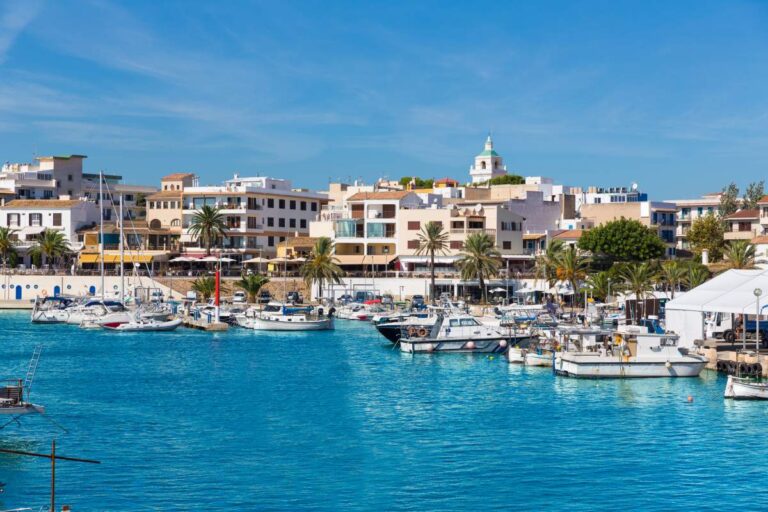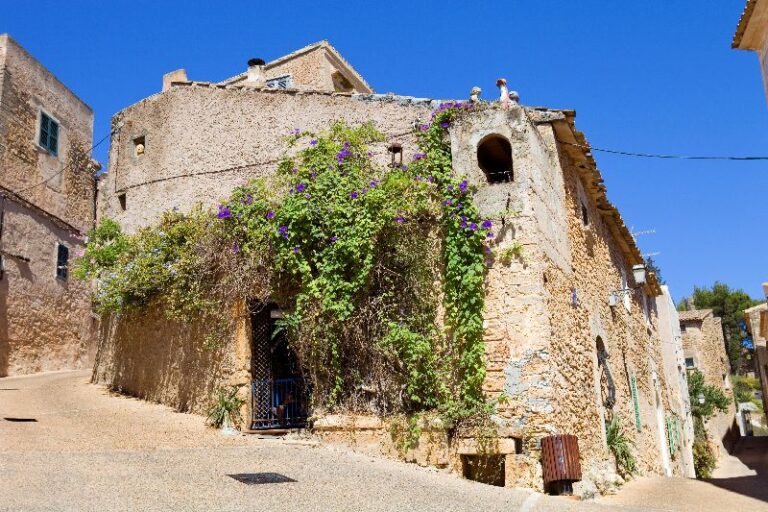All your holiday planning needs in one place, letting you book direct and benefit from official online rates
- Places To Go
- Things To Do
What’s Your Interest?
Traveling with kids
- Blog
Artà travel guide
Artà is one of those few places that beautifully combines natural charm and great tourism.
- This is where I want to go!
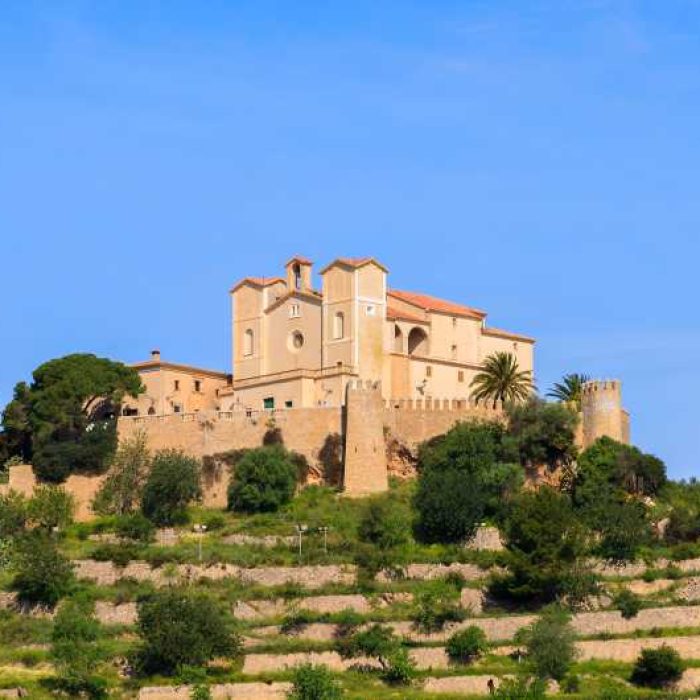
FEATURED EXPERIENCE
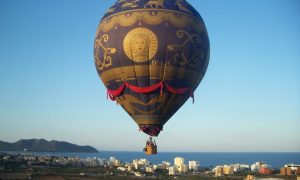
Once in a Lifetime Experience: Romantic Private Hot Air Balloon Flight
- Lowest Online Rates
Why visit artà?
Artà is one of those places that often goes unnoticed in travel brochures, because there are no big family attractions that appeal to the masses. But Artá is actually quite popular, especially amongst active tourists who come here to discover the Mediterranean wildlife found in the beautiful Llevant nature park. Moreover, the town itself has a vibrant life with sidewalk cafes, local shops, restaurants, a weekly market and lots of interesting cultural spaces.
Best things to do in artà
Artà is a place that just keeps giving; you have everything you could possibly ask for in a Mallorcan destination: Local charm, pristine natural areas, beautiful architecture, galleries, sidewalk cafes, points of interest and romantic spots.
In addition, most hotels in the area cater to an adult audience seeking romance and relaxation. They offer wellness treatments, SPA and other services.
PILGRIMAGE CHURCH OF SANT SALVADOR
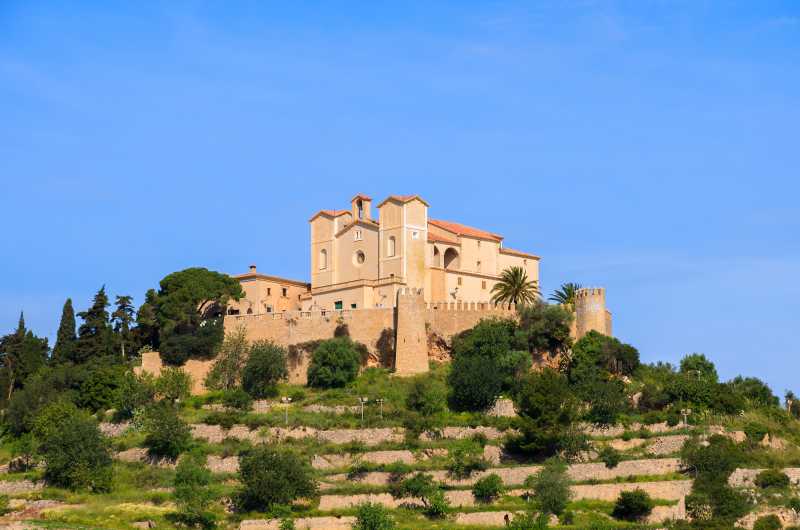
The probably most iconic construction of Ártà, is the pilgrimage church of Sant Salvador situated at the summit of the holy hill. A 180 step stairway leads from the feet of the hill to the top from where you will enjoy the most magnificent views over the town and beautiful area that surrounds it.
ERMITA DE BETLEM

Ermita de Betlem is one of the most popular places to visit in Artà, along with the Sant Salvador of course. This old hermitage is located in the most beautiful spots in the Llevant mountains, on a site overlooking the beautiful north coast. Ermita de Betlem is one of the only hermitages in Mallorca still maintained by monks.
REGIONAL MUSEUM OF ÁRTÀ
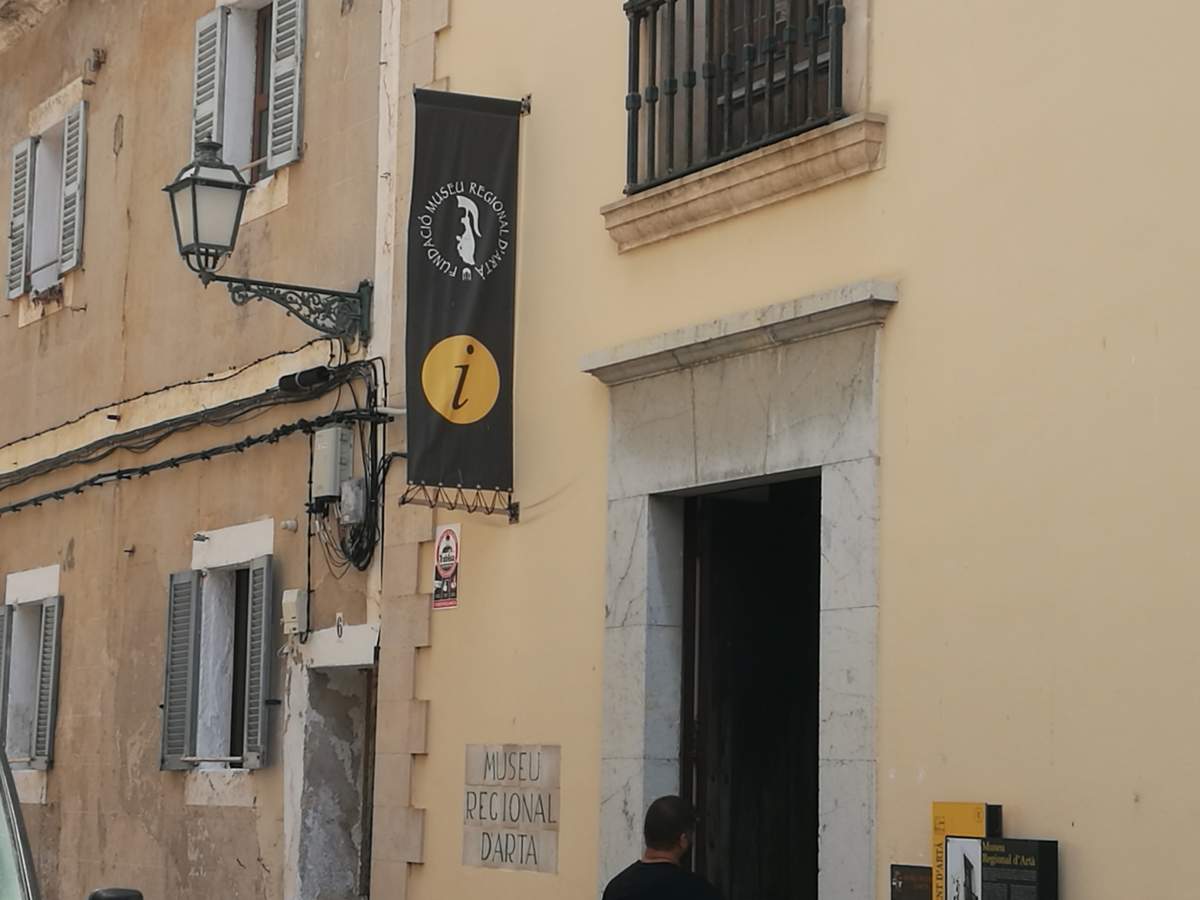
Gain full insight on the wonderful Llevant region along with in-depth knowledge of the local area of Ártà and how it has developed over the last 3,000 years.
Visit the regional museum to learn about nature and prehistory
Walk in the Llevant nature park
The Llevant nature park is the perfect place to enjoy the Balearic wildlife, along with some amazing and breathtaking views of the northeast coast. The nature park is easily accessible from the northern part of Artà town, where you will also find a big free parking lot, however, you can also drive farther into the park and park the car for free. Inside the park, there are a number of marked trails you can follow if you are here for walking and hiking, for example the legendary GB231, but there is also a nice gravel path that takes you up in the terrain to an old bull farm. The Llevant nature park is a place for everyone to enjoy regardless of level and condition.
MONESTIR DE BELLPUIG

Although it is left in poor condition and might not be as imposing as it used to, the old monastery of Bellpuig is well worth a visit simply due to the history of it. This was the very first Christian construction erected in Ártà immediately after the Catalan conquest in 1231/32. The order of Bellpuig de les Avellanes arrived here and brought along the Romanesque statue of the Virgin Mary which is now preserved in the pilgrimage church of Sant Salvador.
CYCLING
Artà is a great area for road cycling, the town is well-connected to the network of paved roads leading about on the island. In the area itself you can look forward to exploring the Llevant mountain range full of challenging hairpin turns, ascents and descents, leading to the most amazing vantage points and views. Another very interesting route, is the green route of Mallorca which connect Arta to Manacor, the only green route on the island.
PARISH CHURCH OF THE TRANSFIGURATION OF THE LORD

Built in stunning Neo-Gothic style, the parish church of Ártà stands as a beautiful gate at the feet of the holy hill of Sant Salvador. The church was inaugurated in the 17th century, and features a wealth of interesting details to have a closer look at such as the Portals de la Dones and Portal dels Homes, the main altarpiece of the Transfiguration of the Lord, the stained class windows, the pipe organ and much more.
TORRE DE ALBARCA
The old watchtower of Albarca overlooks the coast from its position above the cove of Es Matzocs. The tower was originally built to watch the strait between Mallorca and Menorca as the Brits had occupied the neighboring island. The tower still preserves its original bronze cannon on the platform.
CONVENT OF SANT ANTONI DE PÀDUA
The Franciscan convent was established in Ártà in the late 16th century. The cloister inside has been protected as a cultural heritage monument, it is amazingly beautiful with its detailed columns.
DISCOVER THE RICH ARCHITECTURAL HERITAGE
Artà is one of the most interesting towns in Mallorca, along with Palma, Llucmajor and Sóller, to enjoy beautiful architecture. The town comprise a wide array of mansions that spans over different architectural styles such as Catalan Modernism, Neo-classicism and Mallorcan regionalism. Artà was a place that saw an increased wealth in the first half of the 20th century due to large investments in industrialism and idle pioneers. Particularly the Na Batlessa mansion and the Ca’n Epifani mansion are unique examples of this splendid period.
FAQ
From Palma International Airport, it takes about an hour by car to reach Artà. Take the Ma-15 highway going towards Manacor.
Artà can be visited all year round, one of the things that makes it so great. During winter, the area is particularly popular amongst active tourists, while during summer people come to escape the nearby mass tourism resorts.
Artà is famous for the Llevant nature park and the fortified pilgrimage church of Sant Salvador.
Artà is located approximately 80 km (50 miles) from Palma and the airport.
Events in Artà you shouldn't miss


Weekly market in Ártà
Every Tuesday morning at 8:00 am, Ártà opens up the streets for the weekly market to be held. It takes place centrally, on the city’s main square. At the market, you can let your senses be seduced, by a colorful and aromatic variety of fresh fruits, meat, fish, flowers and sweet almonds and figs. This is an ideal opportunity to taste some of the typical Mallorcan local delicacies, e.g. the famous sobrassada-sausages.
January
Artalaiotica
Artalaiotica is a rather new festival inaugurated in 2017 with the aim of promoting the prehistoric heritage of the area. Ártà is home to one of the most interesting and well-preserved prehistoric villages dating from the Talayotic culture unique to the Balearic Islands. Artalaiotica offers a range of interesting and fun activities for all ages such as workshops, food tastings, theatrical performances, music, lectures and guided tours. This is a wonderful opportunity to explore and learn about the rich prehistory of the Balearic Islands that was here before the Romans invaded 123 BC.
Fira del Peix
Fira del Peix is a festival dedicated to the fishing industry, held in Colònia de Sant Pere every year in April. The aim of this spring festival, is to mix the themes of environment, culture and gastronomy, for you to experience another side of Ártà. During the festival, you can enjoy a series of activities, exhibitions and food, all representing the maritime activities of the municipality.
June
Festes de Sant Pere
On June 29, the coastal town of Colònia de Santa Pere celebrates its patron saint with a festival. The program usually include concerts, games, contests, open-air community dinners (also for tourists), various dance performances accompanied by the xeremies (Mallorcan bagpipes) and fireworks at the beach in the evening. This is a festive and cultural happening that gather locals and tourists in a jolly atmosphere.
Ártà Beer Festival
Ártà Beer Festival is for beer lovers by beer lovers. It is a two-day festival dedicated to craft beer organized by the Malalts de Birra, a craft beer association from the local area. During the two days, you can enjoy contests, talks, performances, and of course, lots of craft beer of all kinds.
August
Festes de Sant Salvador
During the first week of August, the people of Ártà celebrate their patron saint with a festival that culminate at the end of the week. The program is usually packed with fun and cultural activities suited for all ages, including games, contests, performances, tastings, demonstrations, exhibitions, parades, workshops etc. The town hall arranges the festivities in collaboration with different local associations to have a diversified and appealing program lined up. On the day after the day of Sant Salvador, the traditional Ball de Cisterna dance is held.
September
Fira Ramadera
Fira Ramadera is the autumn fair of Ártà, a fair dedicated to agriculture, livestock, industrial machinery and artisan products. Indulge in a wide variety of foods, local products and interesting exhibitions as you roam the streets during Fira Ramadera.
October
Ártà Stocks Fora!
Also known as the “Fair of Opportunities”, this market aims to promote the local business life of Ártà by allowing business owners to empty their stocks and put it on sale for extremely discounted prices. If you are looking for clothes, shoes, jewelries, asseccories etc., come browse the hundreds of stands in the heart of Ártà in late October.
December
Mercadet de Nadal de Colònia de Sant Pere
The Christmas market in Colònia de Sant Pere is a cozy little market held in the church square in front of the cute church building.
Mercadet de Nadal de Ártà
The Christmas market in Ártà is a great opportunity to get the Christmas shopping underway. The market is organized by the local business association, and there are many great offers to indulge in.
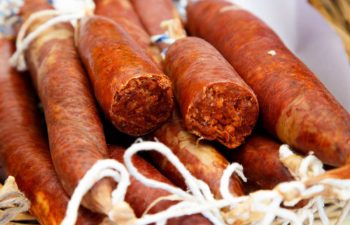
Support Local
Supporting local communities during your travels can have a profound impact. Stock up with groceries locally, stop in an artisan shop or enjoy a refreshment at a restaurant or bar. Now more than ever, these small businesses need support from travelers near and far.
Get to know the area and history of Artà
Artà is one of the larger municipalities in the Llevant region of Mallorca, comprising the town itself, the Llevant mountain range, the small villages of Montfarrutx and s´Estanyol and the two coastal holiday destinations of Colònia de Sant Pere and Betlem. In total, Ártà covers a surface of 13,966 hectares, whereof 9,553 of these are categorized as protected zones, numbers that testifies the rich natural diversity of the municipality. The municipality borders the areas of Capdepera (east), Son Servera (south-east), Sant Llorenc des Cardassar (south), Petra (south-west) and Santa Margalida (west).
Typical products of Ártà
- Oils
- Almonds
- Grapes
- Figs
- Cereals
History of Ártà
The first vestiges of human occupation in the area dates from around 1,200 BC, in what we know as the Pre-Talayotic period where people lived in caves and huts. However, what is most interesting is the Talayotic village of Ses Païsses and the talaiot de sa Canova.
During the Moorish dominance of Mallorca (902 – 1231/32), the area was known as “Juz d’Yartan“, (Jurisdiction of Yartan) one of thirteen districts which divided the island. The Moorish settlers had more than one hundred sheds and farms, the rafals and alquerias. When referring to a farm from the Islamic period, we are talking about a small community inhabited by a family or tribe which consisted of several buildings.
Aside from the current area of Ártà, the Yartan distric also included the current municipality of Capdepera. With the Muslim occupation, hydraulic engineering was utilized in form of the qanats, underground tunnels for transporting water from its spring to wells. Some of the best examples of qanats is the one of Font de la Vila found about one hundred meters south of the town itself by the Torrent des Revolts. With the installation of the water transportation systems, the Moorish communities were able to irrigate the soil in an efficient way cultivating vegetables, rice, cotton, linen, sugarcane etc. Raising livestock was another important activity during the Islamic period, especially horses, mules and sheep.
The Muslims built a citadel around their farm called Almudaina meaning “fortress” or “castle“, that belonged to the Berber tribe of Ayt Iraten, a tribe that still exists today in the mountains of Kabylie, Algeria. The Almudaina was one of only six villages present prior to the Catalan conquest of the island, it had streets, houses, orchards, as well as a mosque. Beside from the Ayt Iraten tribe, the Juz d’Yartan was also occupied by another large tribe, the Bani-Agger, that resided in the farms of Baninatgar, Beniaxir and Benicatzar.
In September 1229, King Jaume I of Aragón arrived with 150 ships carrying 700 horsemen and 20,000 infantry, at the shores of Santa Ponca. On December 31 the same year, Madina Mayrqua (Palma) had already been conquered and the valí (Arab governor) defeated. Those Muslims not killed or taken as slaves in the capital fled to the Tramuntana and Llevant mountains to seek refuge, while others tried to flee to Menorca.
After carefully analyzing and considering his options, Jaume set off for the Llevant mountains as the Tramuntana would be too much of a challenge for his army at the time just after the conquest of the city. He knew that about 16,000 Saracens had fled to to Tramuntana. Once the king and his soldiers arrived in the area, they deployed and camped by the coast at the feet of the mountains next to a river. This is written in the Llibre del Fets (Book of Acts), a comprehensive documentation of the entire conquest step by step. It is very likely that the battle in Llevant between Christians and Muslims happened in the area of Farrutx, based on this documentation and description of the book. On March 4, the Saracens finally surrendered after fighting from their temporary hideout in the cliffs and caves of the mountains. More than 2,000 Saracens had been defeated by the Almogavars in the Llevant mountains north of Ártà. With the victory, the Christians acquired more than 10,000 cows and 30,000 sheep found on the mountain slopes.
After the Christian conquest, the order of Bellpuig de les Avellanes arrived in the area, led by abbot Bernat de Narbona (Narbonne), whom came from a family of viscounts that had participated in the conquest of Mallorca and Valencia. Religious leaders were requested by the newly established bishopric of Mallorca. A delegation of Bellpuigs set off for the island and settled a few kilometers south of the current town, where they built the monastery of Santa Maria de Bellpuig d’Ártà. The order of Bellpuig de les Avellanes, partly mixed by the Premonstratensians, brought with them a wooden Romanesque statue of the Virgin Mary for veneration, which is now preserved in the pilgrimage church of Sant Salvador.
In 1302, King Jaume II of Mallorca acquired the lands of sa Devesa de Ferrutx (south of Colonia de Sant Pere), an area comprising about 3,000 ha. He sold parts of the land to private owners and planted pastures for wild boars, deer, rabbits and other game. In 1350, most of the lands was sold to the Son Morell family.
The walled enclosure known as “Almudaina”, was renamed to “Almudaina d’Ártà“, a name it would preserve until the 17th century, and started to expand with new streets and squares that unfolded at the feet of the Sant Salvador hill. Also in the beginning of the 1300’s, Jaume II of Mallorca enacted a set of ordinates that would grant urban centers of more than 100 habitations the privileges as towns allowing trade and councils.
During the 14th century, after some years of societal growth and prosperity, the Balearic economy started to experience some dark years characterized by bad harvests, epidemics and pestilences which led to decline in cereal production. Especially the Black Plague of 1348, reduced the population outside the Ciutat de Mallorca (Palma) by more than 20%. The economy of the areas outside the Ciutat de Mallorca was mainly based on the cultivation of dry land cereals that were intended for domestic consumption, and with the decline in production there was no other sources of income. Hunger and malnutrition was part of the subsistence crises that eventually led to the first real social conflicts of the island; Revolta Forana and Les Germanies.
After years of economic instability with no production and expensive import of wheat and cereals, Mallorca was facing a higher fiscal pressure which particularly was hard on the peasants of the countryside including Ártà. To make matters worse, there was also a great deal of corruption among the noble classes putting the peasants and day laborers out of influence. In 1450, the king ordered a so-called “capbreu” was to be written, a document stating who owned what in terms of estates on the island, to define how taxes was to be set. The nobles, who were the ones writing this capbreu, gave themselves all the privileges and documented the estates and lands to themselves, while the peasants could not find their documentation. All this together, unleashed the first civil war of Mallorca, Revolta Forana, the revolt of the foreigners, a war that lasted for two years until the king sent mercenaries to the island to put an end to the rebellions. Post the events of the Revolta Forana, towns like Ártà was fined with extra taxes to pay for the damages caused.
During the 16th and 17th centuries, the coastal populations of the Balearic Island continuously suffered severe attacks from Berber, Turkish, Algerian and Tunisian pirates. The pirates sacked, plundered, killed and kidnapped the inhabitants during their merciless raids, moreover, they interrupted the maritime and commercial activities. The neighboring island of Menorca was particularly exposed, and in 1558, Ciutadella was completely devastated and more than 3,000 people were captured, many of them never returned. As a consequence of these raids, the islands experienced both economic and demographic stagnation.
To secure the town better, the walled enclosure was rebuilt and enhanced with watchtowers. The king also allowed local corsairs in the Balearic Sea as a counter attack of the pirates. This was a cost efficient way of gaining both protection and treasury. Another reminiscence of the pirate raids, is the watchtower of Moreia overlooking the bay from its position at the summit of the Moreia mountain built in 1557.
In the modern age, agricultural activities such as livestock and cereal production was some of the predominant activities in the area. However, it is also important to mention the textile industry, which is still an active industry in this area. In the second half of the 18th century, there were unions of weavers who sold their products to almost all areas of Mallorca. In a report from 1784, it is stated that Ártà alone had 60 weavers and 87 looms with a production of 102 kg of linen and hemp.
Despite of pirate raids, social conflicts etc., the population in Ártà increased considerably during the 16th and 18th centuries. Ártà was the most populous town in the Llevant peninsula with more than 50% of the total population. During the second half of the 16th century, the town saw a need to build a new church for the growing congregation, new farms and plots etc., and in the 17th century the Franciscan church and monastery was erected.
Following the Constitution of Cadíz in 1812, the towns of Capdepera and Son Servera segregated from Ártà. This constellation, however, did not last long as in 1814 the return of absolutism was reenacted in Spain. During the Liberal Triennium of 1820-1823, when the constitutional code again came into force, Capdepera and Son Servera again enjoyed their own town hall, initially with the same territorial division that had been established in 1813. However, the situation became very complex since Son Servera asked for a territorial extension, and, at the same time, Capdepera proposed a new division that was unacceptable by the City Council of Artà. All this happened in a time of enormous economical difficulties caused by the terrible epidemic of bubonic plague in 1820.
As the political system underwent several phases in the 19th century, there was a lot of going back and forth with different reforms and constellations. The drought in the 1840’s resulted in an appeal from Capdepera for a re-incorporation to the municipality of Ártà. In 1858, the final segregation was completed.
Agricultural activities remained the predominant source of income in Ártà throughout the 19th century and well into the 20th century. Livestock, olive production, cereals and legumes occupied most of the irrigated soil. At the same time, emigration and famine were considerable threats to the communities and so to try and alleviate this, the government came up with an idea of creating agricultural colonies on the island. Under the Law of Population, in 1880, the three brothers, Bartomeu, Mateu and Andreu Homar bought the lands of sa Devesa de Ferrutx, Betlem de Marina, s’Alqueria Vella, es Barracar and es Caló, comprising lands of approximately 2,550 hectares. This was the foundation of Colònia de Santa Pere. The law allowed the brothers to convert unspoiled soil to groves and plantations without costs, and, granting them considerable tax exemptions. In total, nine colonies were founded in Mallorca in the period between 1874 and 1891, however, only four of them are left; Colònia de Sant Pere, Colònia de Sant Jordí, Portocolom and Porto Cristo. With the rumors of the new colony unfolding rapidly soon spread throughout the island, and people came from many areas to settle here in hope of becoming successful colonists. Documentation shows that it was not just from Ártà people came, but also from the areas of Felanitx, Llubí, Sant Llorenç des Cardassar, Capdepera, Manacor, Lloseta and Santanyí.
Although being predominant, the agricultural activities were not the only sources of income in Ártà during the 19th and 20th centuries. Textiles and basketwork was also a considerable source of income in the area.
In the last part of the 19th century, a great deal of the major landowners of Ártà emigrated to South America, as was the case of many landowners of the island. One of the main reasons for the massive emigration, was the devastating phylloxera, (wine lice). Thousands of hectares of vineyards was burned to the ground with no forecast of regaining stocks. Years later, many of these families returned to the area to settle again, only this time as businessmen not landowners. Some of the most notable families include the Blanes, the Ferrers and the Alzinas, whose manors can be found in the streets of Ártà.
To know more about the history of Ártà, visit the regional museum found in Plaça d’Espanya next to the Town Hall, where you will also find extensive collections of artifact, coins and more excavated and recovered from the area.
Practical Info
Useful Numbers
Emergency: 112
National police: 091
Local police: 092
Guarda civil: 062
Fire: 080
Maritime emergencies: 900 202 202
Town Hall: +34 971 82 95 95
Public Transport
Bus lines: 411, 421
Power Supply
220V
